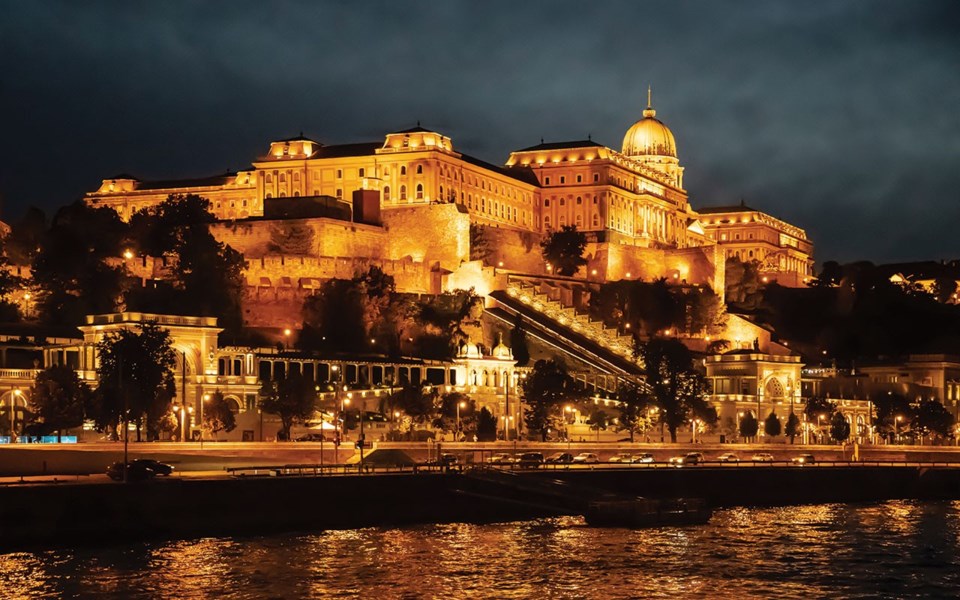
I grew up with a healthy dose of Hans Christian Andersen fairytales and Walt Disney adaptations of prince and princess stories with mostly happy endings. However, the parts that intrigued me the most were the castles and stately mansions of yore—vertical aspirations of hopes, dreams and knightly protection. When I heard that many of these stone edifices still exist in Europe—though some with heavy renovations and others but crumbling relics of their former grandeur, I was determined to see and photograph as many castles, and in some cases castle ruins, as I could within two weeks.
Viking River Cruises' "Grand European" itinerary fit the bill for me, with the bonus that I would start in Budapest, Hungary and sail the Danube on an illumination tour showcasing Buda castle and the Royal Palace at night. From Budapest to Amsterdam, the cruise would take me on a journey of the Danube, Main and Rhine Rivers that showcased the legendary castles of these medieval waterways. (The cruise is also offered in reverse.)
The castle stretch of this stellar European tour starts with Austria's Hinterhaus Castle just south of the town of Spitz on the Danube and ends with the Katz castle in Germany's Rhineland-Palatinate. The castles were all viewed from the top deck of our ship as we forged the river towards Amsterdam. The amazing part is the sheer number of castles we saw from the comfort of the sundeck in the span of several mornings.
There are other castles, estates, palaces and interesting architecture I experienced on this tour but could not photograph from the river. For those reasons, I have not included them in this list. Nevertheless, I mention them as worthy land excursions: Hofburg Imperial Palace in Vienna, the 900-year-old Benedictine monastery in Melk in Austria's Wachau Valley, the UNESCO World Heritage Site and medieval town of Regensburg, old town area of Nuremberg, Seehof Palace near Memmelsdorf, Bishops' Residenz in Wurzburg—one of Germany's largest and most ornate palaces and a UNESCO World Heritage Site, Privileged Access to Schloss Mespelbrunn and Schloss Lowenstein, the Marksburg Castle in Koblenz (the only Rhine fortress never destroyed), the Bruhl UNESCO palaces in Cologne and the antique windmills in Kinderdijik, Netherlands at the end of the tour. Final resting stop was Amsterdam.
Castle-surfing doesn't get any easier. Following are the castles that are situated by the Danube and Rhine rivers that lent themselves for prime viewing from my deck chair. Though I used my Nikon D850 and 80-400mm telephoto lens to photograph most of the castles, shorter lenses will also work.
Buda castle and Royal Palace (Hungary)
This is the historical Hungarian castle and palace complex of the Hungarian kings in Budapest. Though the palace was badly damaged at the end of the Second World War, it was rebuilt in the splendid Neo-Baroque style. The expansive buildings and grounds are most photographic when they are illuminated in the dark. Cruising the Danube for a night tour is simply breathtaking. And illuminating.
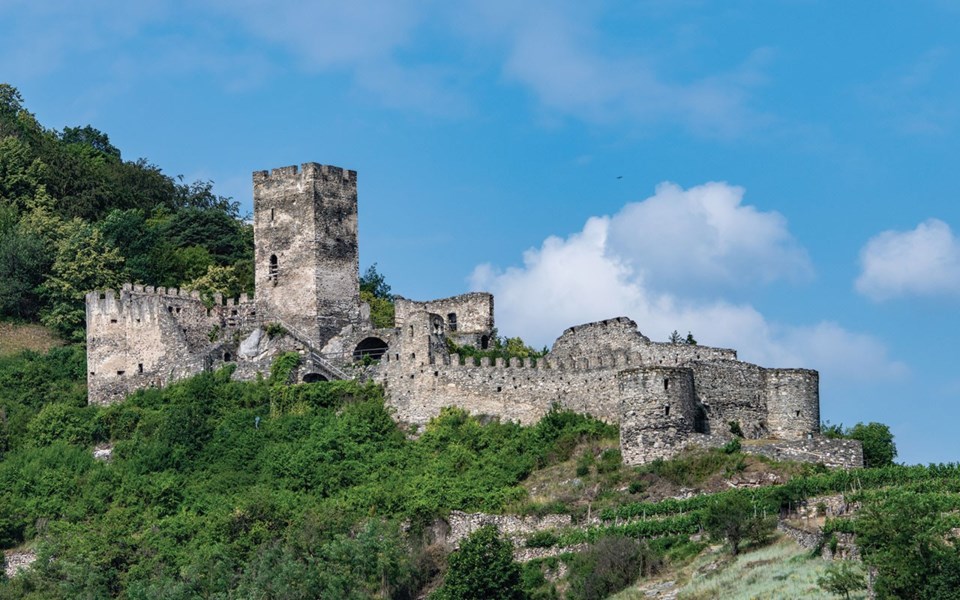
Hinterhaus castle ruin (Austria)
Though this castle is in ruins, it has been occupied since Celtic times with a first mention as early as 830 AD. However, the ruins today actually originated in the 12th century, when it was a strategic stronghold for the Wachau Valley. Today it sits high above the Danube river and the market town of Spitz an der Donau in Lower Austria,
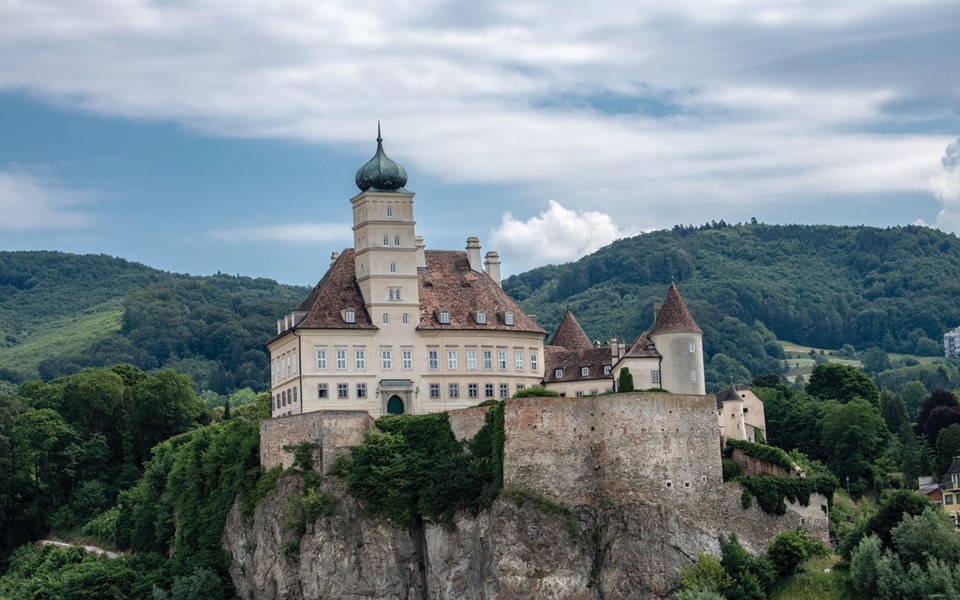
Schonbuhel castle (Austria)
This castle is perched on a high rock overlooking the Danube and the Austrian Wachau Valley—a UNESCO World Heritage Site. Also known as the "Watchman of the Wachau," the castle has been situated here for more than 1,000 years when it was the property of the Bishops of Passau. Many, including myself, consider this castle one of the most photogenic.
Ehrenfels castle ruin (Germany)
The Ehrenfels castle was part of a larger defense in the 13th century that protected territory of the archbishopric of Mainz. The castle also served as a toll station, collecting monies for the bishops and the church. It has been used in times of war as a hiding place for the cathedral treasury of Aachen. It was destroyed in 1689. Today, it is not open to visitors.
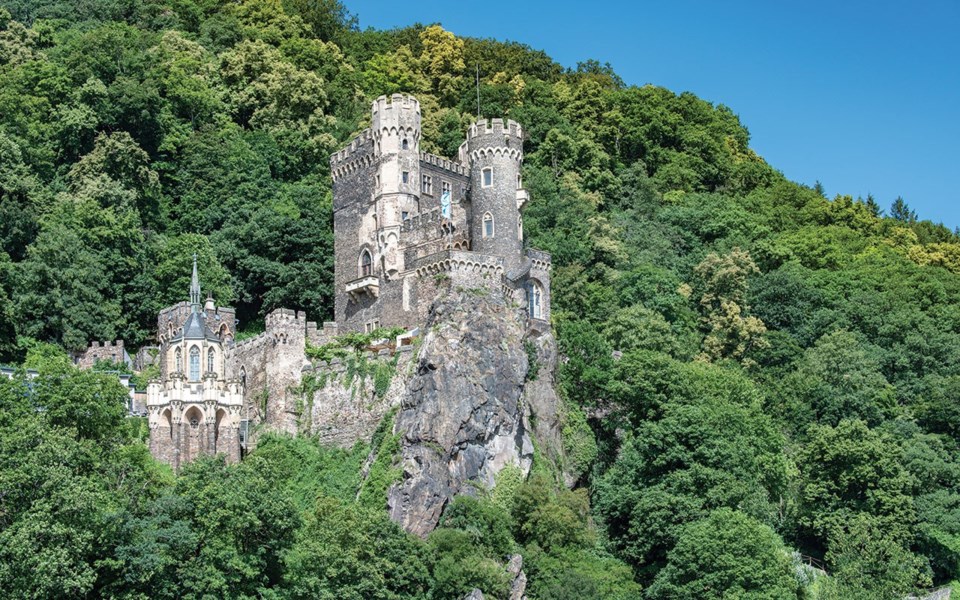
Rheinstein castle (Germany)
The Rheinstein castle is considered to be one of the most important examples of romantic castle reconstruction. It was built in the beginning of the 14th century as a princely summer residence. In 1975 the opera singer Hermann Hecher bought the castle and has renovated it to become a star attraction in the valley.
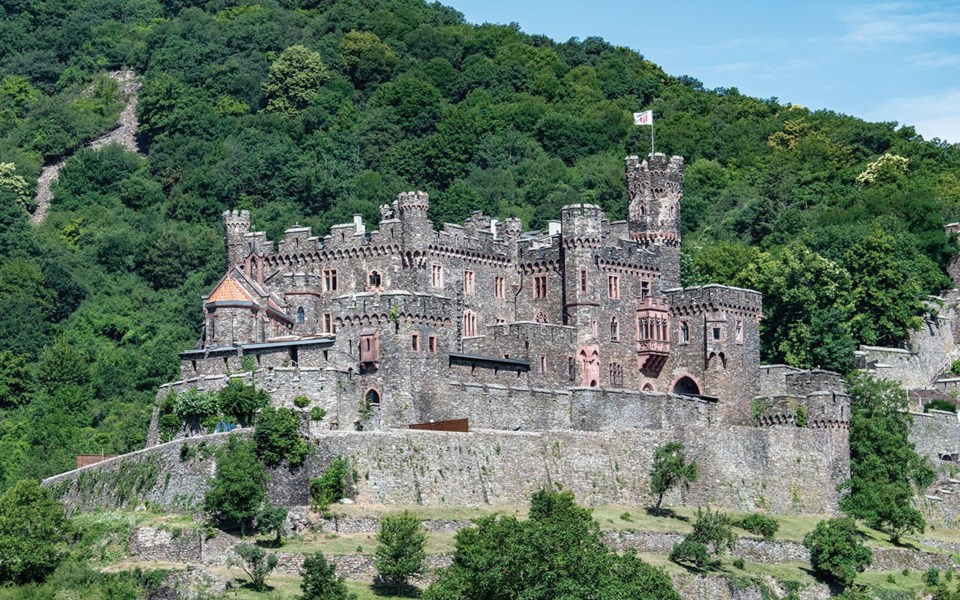
Sooneck castle (Germany)
It is estimated that Sooneck castle was built in the 11th century as part of a defense system of the abbey Kornelimünster near Aachen. Unfortunately, defense was expanded to unauthorized toll-taking, which impeded trade severly. As a result, King Rudolf of Habsburg put an end to their practices in 1282 by destroying Sooneck and neighbouring castles. Friedrich Wilhelm IV converted the ruin into a hunting seat in 1842. The castle still retains an impressive local and view of the river.
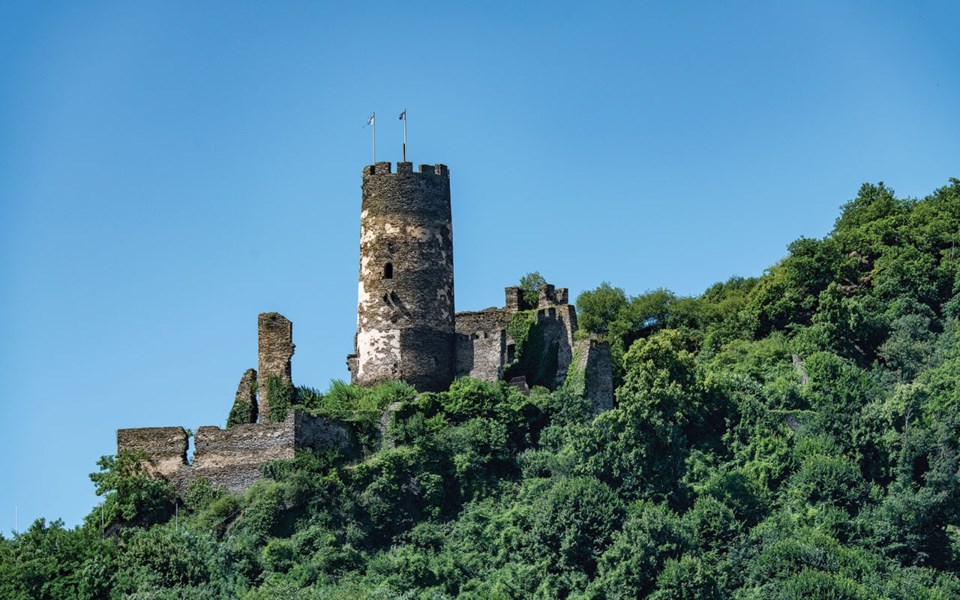
Furstenberg castle ruin (Germany)
Furstenberg castle was built in 1219 by order of the bishop of Cologne. It provided protection and was also used to levy tolls. Destroyed during the Palatinate Succession War, the castle remains in ruins. It is currently privately owned.
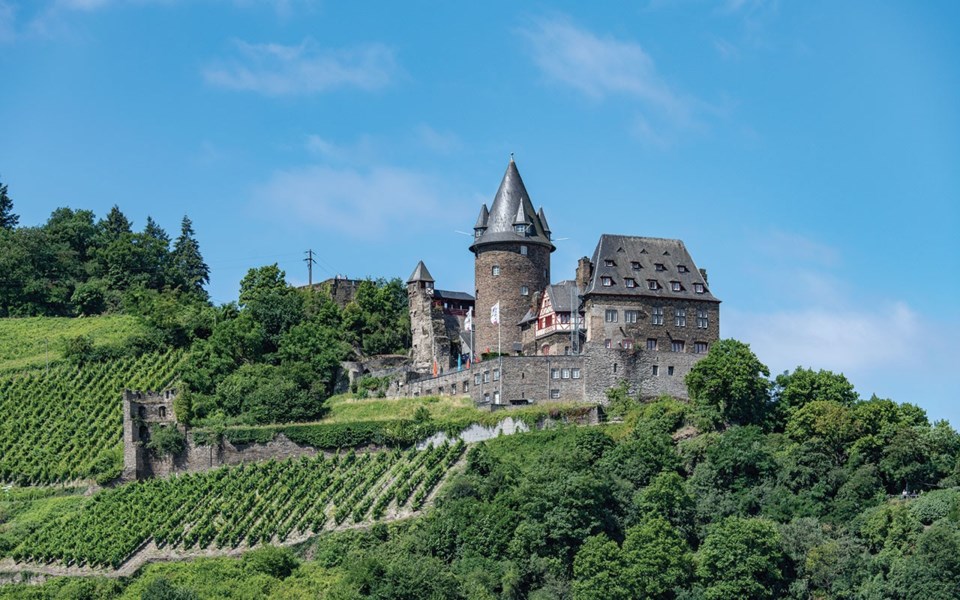
Stahleck castle (Germany)
This castle had a series and succession of owners, first starting in 1135. By 1190 the castle was acquired by emperor Barbarossa, and in 1214 it was acquired by the Bavarian dynasty as an important base for the Wittelsbach rulers. However, the French blew up the castle in 1689. Reconstructed from 1925 to 1927 as well as 1965 to 1967, it was diligently rebuilt. Nowadays the castle is a popular youth hostel.
Gutenfels castle (Germany)
Owned by the Falkenstein family since 1257, it is an important example of the Hohenstaufen military and house construction style on the Rhine. Beginning 1277, it was a castle of the Electorate of Palatinate. But it was renamed Gutenfels (solid rock) after an unsuccessful siege in 1504. Rebuilt between 1889 to 1892, it is now a hotel.
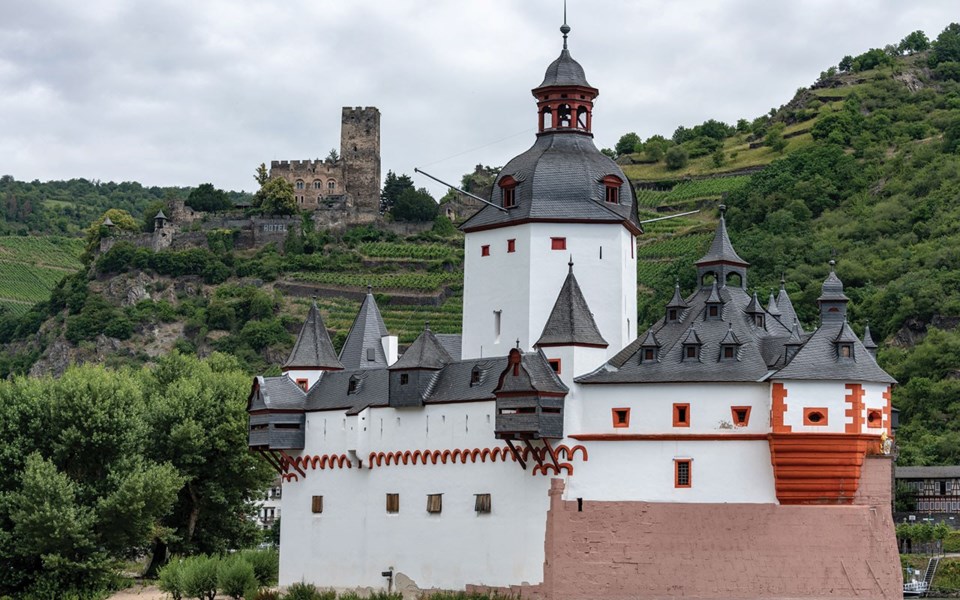
Pfalzgrafenstein castle (Germany)
A toll castle on Pfalz Island near Kaub, it is considered as one of the most picturesque and unique settings on the Rhine. Built in 1327 by Ludwig the Bavarian, the toll station continued operations until 1866.
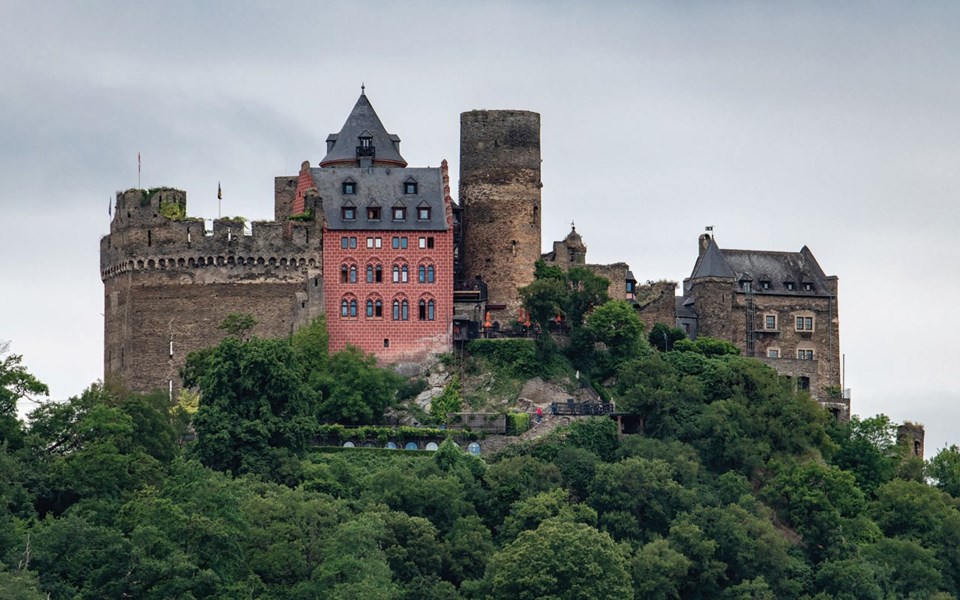
Schonburg castle (Germany)
This castle is located above Oberwesel, a medieval town in the UNESCO World Heritage site of the Upper Middle Rhine Valley, Rhineland-Palatinate, Germany. In 1149 the castle was temporarily an Empire Castle but was destroyed in 1689. Today, Schönburg castle accommodates a famous hotel.
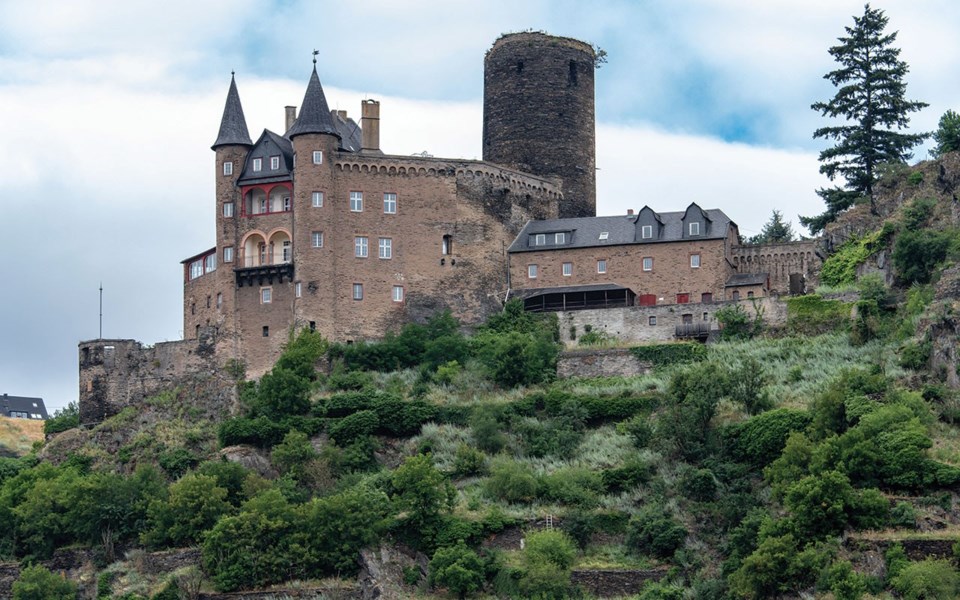
Katz castle (Germany)
Located above the town of St. Goarshausen in Rhineland-Palatinate, the castle precipitously stares down at the Rhine river below. First built around 1371, it was bombarded in 1806 by Napoleon, only to be rebuilt later. The castle is now privately owned and accommodates the hotel Katz Castle.
Karin Leperi is an award-winning Albuquerque-based travel writer and photographer who revels in romantic and medieval travel, whether it be seeking dragons, faeries, castles or renaissance revelries.



